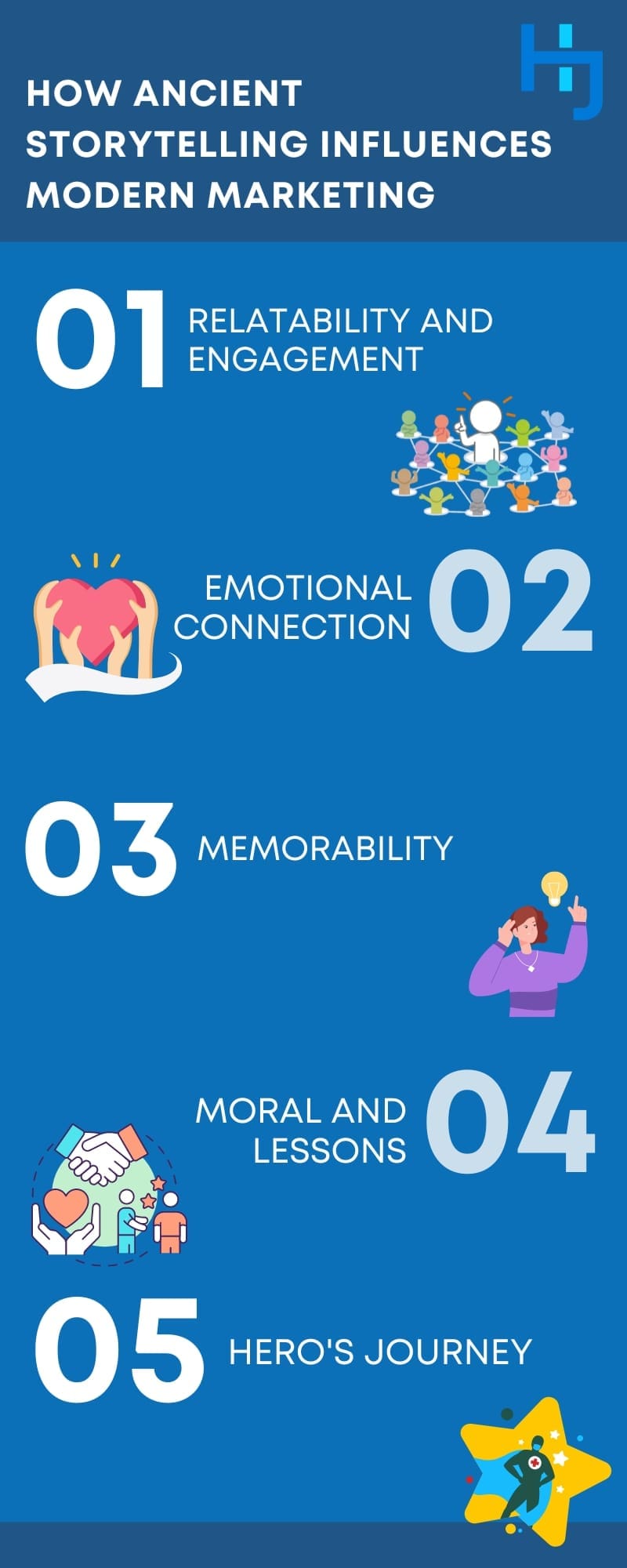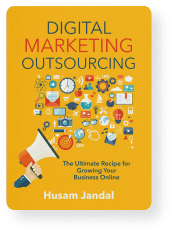 Amid the bustle of the crowded marketplace, merchants shout their wares, and philosophers debate grand ideas. A small group gathers, all eyes fixed on a lone man. His voice, as resonant as a lyre, rises above the buzz. With each jab of the blade he recounts, the group gasps, and as the hero falls, they go quiet, leaning in closer. Will the hero revive and triumph or be lost to the sands of time? The listeners urge the storyteller on, his vivid imagery transporting them to distant battlefields and heroic quests, forging a shared experience that transcends the chaos around them.
Amid the bustle of the crowded marketplace, merchants shout their wares, and philosophers debate grand ideas. A small group gathers, all eyes fixed on a lone man. His voice, as resonant as a lyre, rises above the buzz. With each jab of the blade he recounts, the group gasps, and as the hero falls, they go quiet, leaning in closer. Will the hero revive and triumph or be lost to the sands of time? The listeners urge the storyteller on, his vivid imagery transporting them to distant battlefields and heroic quests, forging a shared experience that transcends the chaos around them.
This scene, which historians believe played out often in ancient times, demonstrates the timeless power of storytelling to captivate and connect. Today, we harness these same storytelling techniques to transform brand narratives and engage audiences. By weaving compelling stories, brands rise above the digital noise and forge lasting connections with modern audiences.
In this article, you’ll explore the fundamentals of storytelling and learn how to apply these age-old techniques to storytelling in digital marketing, creating narratives that resonate and engage.
The Ancient Art of Storytelling and the Language of Marketing

Storytelling is one of the oldest forms of communication, predating written language. Our ancestors used stories to convey information, share cultural values, and entertain. These stories, often passed down orally through generations, played a critical role in preserving history, teaching lessons, and fostering a sense of community.
Exploring the Roots of Storytelling as a Communication Tool
Ancient storytelling was primarily oral, relying on the power of memory and the storyteller’s skill. These stories were often told around campfires, communal gatherings, or during rituals and ceremonies. They were designed to be memorable, using repetitive structures, vivid imagery, and moral lessons to ensure they could be easily recalled and shared.
For instance, the epic tales of Homer’s “The Iliad” and “The Odyssey” were recited by bards in ancient Greece long before they were written down, just like the scene you experienced earlier. These stories entertained and reinforced societal values such as heroism, loyalty, and the consequences of hubris. Similarly, First Nations people used storytelling to teach younger generations about their heritage, land, and traditions, embedding vital knowledge within engaging narratives.
How Ancient Storytelling Influences Modern Marketing
Modern marketing borrows heavily from these ancient storytelling techniques. At its core, marketing is about connecting with an audience, and storytelling is an effective way to forge that connection. A few ways ancient storytelling influences modern marketing are highlighted below.
Relatability and Engagement
Just as ancient stories used familiar settings and characters to engage listeners, modern marketing uses relatable narratives to draw in audiences. For example, Dove’s “Real Beauty” campaign tells real women’s stories to challenge beauty stereotypes, making the brand more relatable and trustworthy.
Emotional Connection
Stories have always been a powerful tool for evoking emotions. In marketing, creating an emotional connection can significantly influence consumer behavior. The famous “Share a Coke” campaign by Coca-Cola personalized bottles with people’s names, turning a simple product into a story about sharing and connection.
Memorability
The repetitive and structured nature of ancient stories made them easy to remember. Similarly, effective marketing campaigns use repetition and clear structure to make their messages stick. The Geico “15 minutes could save you 15% or more on car insurance” slogan is a perfect example of this principle in action.
Moral and Lessons
Just as ancient stories often had a moral or lesson, modern marketing can incorporate educational elements to add value to the audience. For example, Patagonia’s content often includes stories about environmental conservation, aligning with their brand values and educating their audience.
Hero’s Journey
This narrative structure, where a hero embarks on an adventure, faces a crisis, and ultimately returns transformed, is a staple of ancient storytelling and modern marketing. Brands like Apple and Nike often frame their customers as heroes on a journey towards self-improvement or innovation.
Storytelling in the Digital Age
The digital age has revolutionized the way we tell and share stories. Thanks to the Internet, social media, and advanced technology, storytelling has become more dynamic, interactive, and far-reaching than ever before.
The Evolution of Storytelling with Technology

As we transition from campfires to computer screens, the evolution of storytelling with technology has opened new avenues for creating and sharing narratives, making them more immersive, interactive, and accessible.
From Oral to Digital
Historically, stories were shared orally, then in written form through books and letters. The digital revolution brought new mediums, including websites, blogs, social media, and video platforms. These technologies have made storytelling more accessible and allowed for instant global distribution.
Interactive and Immersive Experiences
Technology enables stories to be more interactive. Websites and apps can offer choose-your-own-adventure experiences, while virtual reality (VR) and augmented reality (AR) create immersive environments. For example, National Geographic’s VR experience lets users explore natural wonders, enhancing engagement and understanding.
Multimedia Integration
Modern storytelling often integrates text, images, video, and audio to create richer narratives. This multimedia approach caters to different learning styles and preferences, making stories more compelling. BuzzFeed’s Tasty videos combine visuals and instructions to create engaging cooking stories that are easy to follow and share.
Data-Driven Stories
The digital age allows for the collection and analysis of vast amounts of data. Marketers can use this data to tailor stories to specific audiences, making them more relevant and impactful. Spotify’s year-end “Wrapped” campaign uses listener data to create personalized stories, boosting user engagement and sharing.
Social Media and Viral Potential
Social media platforms like Facebook, Instagram, and X (formerly Twitter) have transformed storytelling by enabling content to go viral. Stories can be shared, liked, and commented on, amplifying their reach and impact. The ALS Ice Bucket Challenge is a prime example of a story that went viral, raising awareness and funds for ALS research.
Building Relatability and Trust Through Stories
Building relatability and trust through stories has become essential for brands, as authentic and emotionally resonant narratives forge deeper connections with audiences.
Authenticity and Transparency
In the digital age, consumers value authenticity. Stories that are genuine and transparent resonate more with audiences. Brands like Warby Parker openly share their founding story and mission, building trust and a loyal customer base.
User-Generated Content
Encouraging customers to share their own stories creates a sense of community and relatability. User-generated content (UGC) provides authentic testimonials and experiences. Salesforce leverages user-generated content by encouraging its customers to share success stories and case studies through its Trailblazer Community. These real-life testimonials from businesses highlight how Salesforce’s solutions have driven growth and efficiency, building credibility and trust within the B2B market.
Consistent Brand Voice
A consistent and relatable brand voice helps in building trust. Brands like Innocent Drinks, for example, use a friendly, humorous tone across all their communications, making them more approachable and trustworthy to their audience.
Emotional Connection
Stories that evoke emotions tend to be more memorable and shareable. Brands can create stronger connections by tapping into emotions like joy, nostalgia, or empathy. The “Thank You, Mom” campaign by P&G during the Rio 2016 Olympic Games is a good example. It celebrated mothers’ roles in athletes’ lives, creating an emotional bond with viewers.
Inclusive Narratives
Inclusive storytelling that reflects diverse experiences and perspectives builds relatability. For example, Dove’s campaigns featuring women of all shapes, sizes, and ethnicities promote a more inclusive definition of beauty, fostering trust and loyalty.
Interactive and Real-Time Engagement
Engaging with audiences in real time through live videos, Q&A sessions, and interactive posts enhances relatability. Platforms like Instagram Live and Facebook Live allow brands to interact directly with their audience, addressing questions and sharing stories in a more personal manner.
Brand Storytelling in the Digital Age
In the digital age, brand storytelling involves crafting narratives that resonate with audiences, convey a brand’s values, and stand out in a crowded marketplace. Here’s how to effectively create and implement compelling brand stories.
Crafting a Compelling Brand Narrative

Creating a compelling brand narrative involves several key steps:
- Identify Your Core Values: Understand and articulate the core values and mission of your brand. What does your brand stand for, and what unique value do you offer?
- Know Your Audience: Tailor your story to your audience’s needs, preferences, and pain points. Use customer personas to guide your narrative development.
- Define Your Brand Voice: Establish a consistent brand voice that reflects your company’s personality. Whether it’s friendly, professional, or innovative, your voice should align with your audience’s expectations.
- Create a Hero’s Journey: Position your customers as the heroes of your story. Showcase how your brand helps them overcome challenges and achieve their goals.
- Be Authentic and Transparent: Authenticity builds trust. Share real stories, behind-the-scenes looks, and genuine testimonials to connect with your audience.
Elements of a Strong Brand Story
A strong brand story typically includes the following elements:
- Relatable Characters: Characters that your audience can identify with or aspire to be.
- Conflict and Resolution: A problem or challenge that needs solving and how your brand provides the solution.
- Emotional Connection: Emotions play a crucial role in memory and decision-making. Your story should evoke emotions that resonate with your audience.
- Clear Message: A concise and clear message that communicates your brand’s core values and mission.
- Consistency: Consistent storytelling across all platforms and touchpoints ensures a unified brand image.
Effective Brand Storytelling in Various Industries
Different industries leverage brand storytelling in unique ways.
- Technology: Oftentimes, tech companies like Apple use storytelling to highlight innovation and user experience. Their “Think Different” campaign celebrated pioneers and aligned the brand with creativity and innovation.
- Healthcare: It’s common for healthcare brands to use patient stories to highlight the impact of their services. For example, the Cleveland Clinic’s “Empathy” series uses real patient stories to emphasize compassionate care.
- Retail: We see retailers like Patagonia focus on sustainability and environmental stewardship. Their stories about sourcing materials responsibly and supporting conservation initiatives resonate with environmentally conscious consumers.
- Finance: It’s common for financial brands to use storytelling to build trust and highlight customer success. For example, the American Express “Small Business Saturday” campaign tells the stories of small business owners, encouraging consumers to shop local.
- Automotive: Automotive brands like Tesla tell stories of innovation and sustainability. They showcase their electric vehicles’ benefits, aligning their brand with the future of transportation.
The Power of Narrative in Digital Marketing
Narratives in digital marketing hold immense power to captivate, engage, and retain audiences by weaving messages into compelling stories.
Techniques for Engaging and Retaining Audiences Through Stories
Mastering the art of engaging and retaining audiences through compelling stories is crucial. Here are some effective techniques for capturing your audience and keeping them coming back for more.
- Personalization: Tailor stories to individual audience segments to make them feel seen and understood. Use data insights to create relevant and personalized narratives.
- Emotional Appeal: Craft stories that evoke emotions such as joy, surprise, or empathy. Emotional engagement increases the likelihood of audience retention and action.
- Interactive Content: Incorporate interactive elements like polls, quizzes, and user-generated content to actively involve the audience in the storytelling process.
- Consistency and Frequency: Maintain a consistent narrative across all channels and regularly update your stories to keep the audience engaged over time.
Integrating Multisensory Experiences into Digital Stories
To create truly immersive and memorable narratives, integrating multisensory experiences into your digital stories is key. A few methods to achieve this are outlined below.
- Visuals and Graphics: Use high-quality images, infographics, and videos to make stories more visually appealing and engaging. Platforms like Instagram and Pinterest are great for visual storytelling.
- Audio Elements: Incorporate sound effects, background music, or podcasts to add an auditory dimension to your stories. This can be particularly effective in creating an immersive experience.
- Interactive Media: Leverage AR and VR to create immersive storytelling experiences. Brands like IKEA use AR to let customers visualize furniture in their own homes.
- Textual Content: Combine compelling copy with other sensory elements. Well-written text can provide context, detail, and depth to the visual and audio components of a story.
- Experiential Marketing: Create real-life experiences that tie into your digital narratives. For example, pop-up events or interactive installations that align with your online campaigns can enhance the multisensory experience.
Measuring the Impact of Storytelling on Digital Marketing Success
Evaluating the effectiveness of storytelling in digital marketing involves tracking various metrics and utilizing specific tools to analyze the impact of your narratives.
Key Metrics to Track Storytelling Effectiveness
Understanding the impact of your storytelling efforts requires monitoring specific metrics that indicate how well your narratives resonate with your audience. Here are the key metrics to focus on to measure storytelling effectiveness.
- Engagement Rates: Monitor likes, comments, shares, and time spent on content to gauge audience engagement with your stories.
- Conversion Rates: Track how many viewers of your story take desired actions, such as signing up for a newsletter or making a purchase.
- Brand Sentiment: Analyze social media mentions and reviews to understand how your story influences brand perception.
- Traffic and Bounce Rates: Measure website traffic generated by your storytelling efforts and track bounce rates to see if visitors are staying and exploring more content.
- Return on Investment (ROI): Calculate the ROI of your storytelling campaigns by comparing the cost of content creation and distribution against the revenue generated.
Tools and Techniques for Analyzing Story Impact
To gain deeper insights into the success of your storytelling campaigns, leveraging the right tools and techniques is essential.
- Google Analytics: Use Google Analytics to track website traffic, user behavior, and conversion rates, providing insights into how your stories drive engagement and sales.
- Social Media Analytics: Platforms like Facebook Insights, X Analytics, and Instagram Insights offer data on engagement rates, reach, and audience demographics.
- Sentiment Analysis Tools: Tools like Brandwatch and Hootsuite can analyze social media mentions and reviews to assess brand sentiment and audience reactions.
- Heatmaps: Use heat-mapping tools like Hotjar to see where users click, scroll, and spend the most time on your webpage, revealing how they interact with your story content.
- A/B Testing: Conduct A/B tests with different storytelling approaches to see which version resonates more with your audience, optimizing for better engagement and conversion rates.
Get Help Leveraging Storytelling in Your Digital Marketing
Storytelling is one of the many strategies I weave into the strategies I help brands create as a digital marketing consultant. If you want to level up your strategy using storytelling and other proven approaches, please contact me for a complimentary consultation.
Storytelling in Digital Marketing FAQs
How can storytelling improve my digital marketing strategy?
Storytelling enhances digital marketing by creating deeper connections with the audience, fostering trust, and making your brand more memorable. It helps differentiate your brand, engages emotions, and encourages shares and interactions. Effective storytelling can also clarify complex ideas, making them more accessible and relatable to your audience.
What are the key elements of effective storytelling in marketing?
Effective storytelling in marketing includes a clear message, relatable characters, conflict and resolution, emotional appeal, and a consistent brand voice. These elements work together to create a narrative that resonates with the audience, evokes emotions, and communicates the brand's core values and mission.
How do I create a compelling brand narrative?
To create a compelling brand narrative, start by defining your brand's core values and mission. Understand your audience's needs and preferences. Develop a consistent brand voice and use a hero's journey structure, positioning your customer as the hero. Be authentic and transparent, sharing real stories and testimonials to build trust.
What are some examples of successful storytelling in digital marketing?
Successful examples include Dove's "Real Beauty" campaign, which challenges beauty stereotypes by sharing real women's stories, and Nike's "Just Do It" campaign, highlighting athletes' inspirational journeys. These campaigns effectively use storytelling to build emotional connections and align with their brand values.
How can storytelling help build brand trust and loyalty?
Storytelling builds trust and loyalty by making brands more relatable and human. Authentic and transparent narratives resonate with audiences, fostering emotional connections. Sharing real customer stories and testimonials adds credibility, while consistent storytelling reinforces brand identity and values, encouraging long-term loyalty.
What tools can I use to measure the effectiveness of storytelling in digital marketing?
Tools like Google Analytics, social media analytics, sentiment analysis tools, heatmaps, and A/B testing platforms can measure the impact of storytelling. These tools track engagement, conversion rates, brand sentiment, user behavior, and the overall effectiveness of your storytelling efforts.
How do I incorporate multimedia elements into my storytelling strategy?
Integrate visuals (images, infographics, videos), audio (podcasts, sound effects), and interactive media (AR, VR, interactive content) to enrich your stories. Use high-quality visuals and engaging audio to create immersive experiences. Interactive media can involve your audience directly, making the storytelling more dynamic and memorable.
What role does emotional appeal play in storytelling for marketing?
Emotional appeal is crucial in storytelling as it helps create a deeper connection with the audience. Stories that evoke emotions like joy, sadness, or inspiration are more memorable and impactful. Emotional engagement can drive audience action, increase sharing, and build long-term loyalty to the brand.
How can small businesses leverage storytelling to compete with larger brands?
Small businesses can leverage storytelling by focusing on authenticity, local relevance, and personal connections. Share unique brand stories, customer testimonials, and behind-the-scenes content. Highlight your passion, values, and community involvement. These authentic narratives can resonate deeply with local audiences and build a loyal customer base.





































































